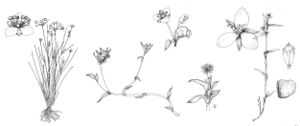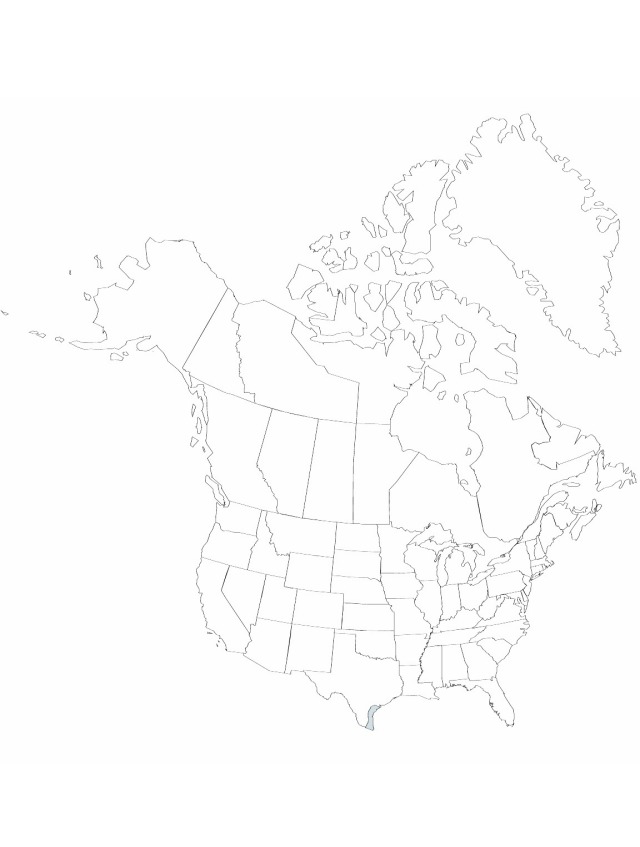Difference between revisions of "Callisia micrantha"
Kew Bull. 38: 131. 1983.
FNA>Volume Importer |
FNA>Volume Importer |
||
| Line 10: | Line 10: | ||
|name=Tradescantia micrantha | |name=Tradescantia micrantha | ||
|authority=Torrey | |authority=Torrey | ||
| + | |rank=species | ||
|publication_title=in W. H. Emory, Rep. U.S. Mex. Bound. | |publication_title=in W. H. Emory, Rep. U.S. Mex. Bound. | ||
|publication_place=2(1): 224. 1859 | |publication_place=2(1): 224. 1859 | ||
| Line 16: | Line 17: | ||
|name=Phyodina micrantha | |name=Phyodina micrantha | ||
|authority=(Torrey) D. R. Hunt | |authority=(Torrey) D. R. Hunt | ||
| + | |rank=species | ||
}} | }} | ||
|hierarchy=Commelinaceae;Callisia;Callisia micrantha | |hierarchy=Commelinaceae;Callisia;Callisia micrantha | ||
| Line 39: | Line 41: | ||
-->{{#Taxon: | -->{{#Taxon: | ||
name=Callisia micrantha | name=Callisia micrantha | ||
| − | |||
|authority=(Torrey) D. R. Hunt | |authority=(Torrey) D. R. Hunt | ||
|rank=species | |rank=species | ||
| Line 49: | Line 50: | ||
|habitat=Sandy or clayey soils in open oak or mesquite woods and prairies | |habitat=Sandy or clayey soils in open oak or mesquite woods and prairies | ||
|illustrator=Bee F. Gunn | |illustrator=Bee F. Gunn | ||
| + | |illustration copyright=Flora of North America Association | ||
|distribution=Tex.;Mexico. | |distribution=Tex.;Mexico. | ||
|reference=None | |reference=None | ||
| Line 54: | Line 56: | ||
|publication year=1983 | |publication year=1983 | ||
|special status= | |special status= | ||
| − | |source xml=https://jpend@bitbucket.org/aafc-mbb/fna-data-curation.git/src/ | + | |source xml=https://jpend@bitbucket.org/aafc-mbb/fna-data-curation.git/src/f50eec43f223ca0e34566be0b046453a0960e173/coarse_grained_fna_xml/V22/V22_34.xml |
|genus=Callisia | |genus=Callisia | ||
|species=Callisia micrantha | |species=Callisia micrantha | ||
Revision as of 19:57, 16 December 2019
Herbs, perennial, creeping, succulent. Stems 3–30 cm. Leaves ± conduplicate; blade oblong-elliptic to lanceolate-oblong, 1–3.5 × 0.3–0.8 cm (distal leaf blades much narrower than sheaths when sheaths opened, flattened), margins ciliolate, glabrous. Inflorescences sessile or nearly sessile, subtended by 0–2 leaves that resemble spathaceous bracts, these leaves. Flowers pedicellate; pedicels 0.8–1.2 cm, glabrous or nearly so; sepals strongly keeled, 0.4–0.5 mm, shortly, densely pubescent on keel; petals bright pink to rose, ovate, 0.5–0.7 cm; stamens 6; filaments bearded. Capsules 3-locular, 2 mm. Seeds 1.5 mm. 2n = 24.
Phenology: Flowering spring–fall (May–Sep).
Habitat: Sandy or clayey soils in open oak or mesquite woods and prairies
Discussion
The generic placement of this species requires some explanation because the leaves subtending the inflorescence resemble the bracts of species of Tradescantia. The interpretation of D. R. Hunt (1986b), which I am following, is that the true bracts are small and are borne distal to those leaves.
Selected References
None.

